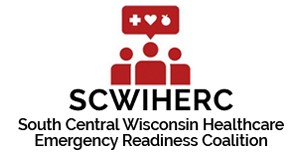Hospitals in South Central Wisconsin see high patient volumes, limited resources
Hospitals seek community help to prevent COVID-19 cases putting critical strain on regional healthcare systems
Hospitals and healthcare facilities throughout southcentral Wisconsin are experiencing a high volume of inpatients, limiting hospital beds and putting a strain on resources.
This serious situation is occurring across the 14 counties of the South Central Wisconsin Healthcare Emergency Readiness Coalition, (SCWIHERC). Its member hospitals are asking for our communities’ help.
To better control the situation, the hospitals are urging everyone to continue being vigilant with COVID-19 safety measures, such as receiving any COVID-19 vaccine, masking, and physically distancing where appropriate.
This present high volume of patients spans across critical care areas of the hospitals, like intensive care units (ICU), general medical floors, and emergency departments. With resources stretched, it is becoming more difficult to receive care close to home if you may need it for COVID and non-COVID-related illnesses.
From July 28 to Sept. 1, the total number of COVID-19 hospitalizations increased four-fold in the South Central region. In that same timeframe, there were 5.5 times the number COVID-19 ICU hospitalizations. Many rural hospitals have no or limited ICU capability and are all reliant on the same limited ICU beds in larger cities, including Madison.
While the current high volume in healthcare facilities in the region is a mixture of COVID-19 and non-COVID-19 patients, a rise in preventable COVID-19 admissions is a driving factor. Preventing a further rise in COVID-19 admissions is our focus in this critical time.
In fact, COVID-19 infections requiring hospitalization are increasing at a similar rate to last winter’s surge. With students from pre-K through college returning to classrooms, the Labor Day holiday, and colder weather soon driving people indoors, additional increases are expected which could stretch resources to critical levels.
To receive a COVID-19 vaccine, please contact your local healthcare providers, or visit the state Department of Health Services vaccine webpage.


